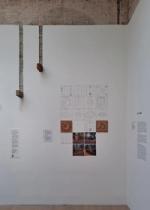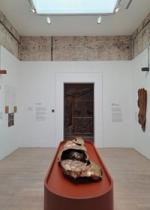Boma Yetu, On-going
Location Kajiado, Kenya
Boma Yetu, On-going
Location Kajiado, Kenya
The Course of Empire documents the African compound house as a housing typology, investigating its historical and contemporary condition. Part of an ongoing funded research project, it investigates how this historic typology can be used to generate more thoughtful responses to urban growth and continuity in African and Western cities. The project seeks to shift the lens of what is coveted as architectural history, through focusing on more than just the built artefact but prioritising the rituals, relationships and restrictions embedded within our shared spatial manifestations. In doing so, we contribute to a more pluralistic reading of the architectural canon. Boma Yetu is on display within the British Pavilion at the 19th Venice Architecture Biennale.
Boma Yetu means ‘Our House’ in Swahili. The word Boma has its origins in the Bantu languages spoken in the African Great Lakes region, where it was used to describe an enclosure for animals, a stockade, or a small fort. It is used to refer to the homestead or compound typically inhabited by a multi-generational family. Typically placed at the centre of the plot and accessed from one side, the compound forms a semi-public nucleus - at once domestic and ceremonial. It serves as a space for everyday life - cooking, laundry, play - but also transforms fluidly to accommodate weddings, funerals, and civic rituals.
Our intention is to revive the typology as a spatial organiser, one that sustains multigenerational infrastructures and reasserts the value of communal life in future Kenyan housing. There is also an essay published within AA Files 78 which explains the compound house in further detail.
Photos by Bushra Mohamed
Photos by Matthew Blunderfield.


